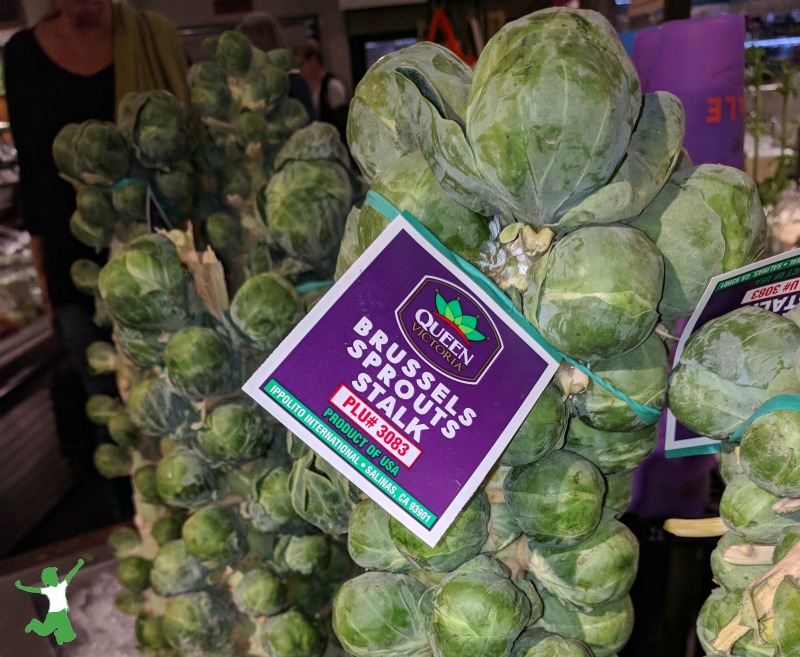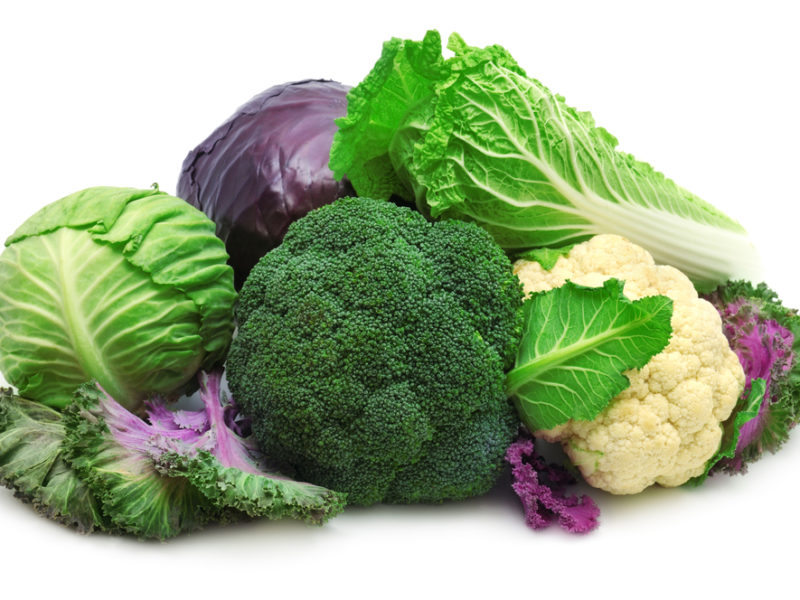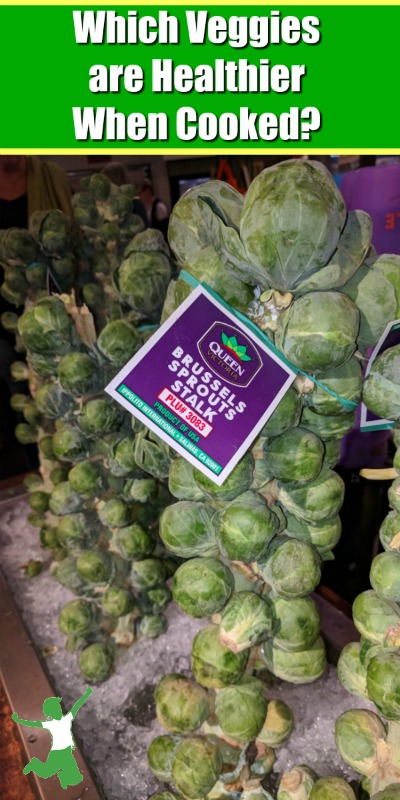Table of Contents[Hide][Show]
Conventional belief is that raw vegetables are always healthier than cooked, but this is not true depending on the plant foods eaten according to lab testing and anthropological evidence by experts in the field.
I stopped by one of my favorite healthfood stores today to pick up a large glass of fresh juice made from organic raw vegetables for an early lunch on the go. As usual, I asked for the a carrot, celery, beet, spinach and cucumber blend. But, hold the spinach. I definitely skipped the green smoothie too!
While this request is usually met with a simple nod by the juice bar attendant, this time the guy looks up and says, “Why no spinach? We have a lot of people that come in here and love the spinach in their juice.”
Ah! Great question!
The truth is that not everything should be eaten raw, especially vegetables!
Some raw vegetables must be cooked else you are actually harming yourself. Below is a rundown of what veggies should not be eaten raw either in whole or juiced form.
Cruciferous Raw Vegetables

Sorry to be the bearer of bad news, but cruciferous vegetables should be cooked before eating as they contain chemicals that BLOCK the production of thyroid hormone in your body! Considering that 2 out of every 3 Westerners are either overweight or obese and this is projected to jump to 75% by 2020, this is of particular importance as folks struggling with weight usually suffer from borderline to full-blown hypothyroidism.
Hypothyroidism is a condition where the thyroid gland does not make enough thyroid hormone, so someone suffering from this condition surely does not want to be eating foods that will block what little thyroid hormone is being produced in the first place!
Symptoms of hypothyroidism include cold hands and feet, thinning hair, fatigue, reduced or nonexistent libido, coarse dry hair, constipation, difficulty losing weight, and depression among many others.
Cooking crucifers reduces the goitrogenic substances by about 2/3. Fermentation does not reduce goitrogens in these veggies, but since fermented crucifers such as sauerkraut are typically eaten as a condiment and, hence, in small amounts, consumption is fine if the diet is rich in iodine.
Here is the list of common cruciferous vegetables that you do not want to be eating raw if you want to protect your thyroid gland!
Arugula, broccoli, kale, maca root, cauliflower, cabbage, turnip, collard greens, bok choy, brussels sprouts, radish, rutabaga, and watercress.
Notice that many of these vegetables are commonly included in fresh veggie juice blends or in salads. While an occasional arugula salad or cup of coleslaw is not going to do harm to most folks, it would be wise not to make a habit of eating/drinking any of these vegetables in raw form. Kale chips are a safe choice too.
Raw Vegetable Greens
Some veggie greens contain a chemical called oxalic acid. This substance is a very irritating to the mouth and intestinal tract. It also blocks iron and calcium absorption and may contribute to the formation of kidney stones.
The good news is that oxalic acid is reduced by a light steaming or cooking. Just be sure to discard the vegetable cooking water.
Veggies containing oxalic acid include spinach, chard, parsley, chives, purslane and beet greens.
Hmmmm. Spinach is known for being high in iron, yet eating it raw will not necessarily give you the iron you want because of the oxalic acid?
Yep, that’s right. Cook that spinach first if you are seeking an iron boost without the indigestion and don’t get hooked on the raw spinach salads!
Don’t stress about munching the parsley garnish on your next gourmet dinner, though. A little bit here and there is not going to cause a problem. Eat a big spinach salad everyday and it is virtually certain you will eventually succumb to kidney stones, according to Dr. William Shaw, Director of The Great Plains Laboratory for Health, Nutrition and Metabolism.
Other Raw Vegetable Cautions
Other vegetables that are best to avoid eating raw include:
- Raw potatoes contain hemagglutinins that disrupt red blood cell function.
- Raw sweet potatoes will give you gas.
- Raw, edible mushrooms such as the common white mushroom contain toxic substances such as agaritine, a suspected carcinogen. These substances are heat sensitive and are neutralized by cooking.
- Raw alfalfa sprouts are mildly toxic and inhibit the immune system. Eating large quantities regularly can make the skin overly sensitive to the sun or trigger autoimmune symptoms that mimic lupus.

Dr. Weston A. Price on Raw Vegetables
A good rule of thumb when considering the best way to consume your veggies is to remember the letter that Dr. Weston A. Price wrote to his nieces and nephews in 1934. In this letter, he strongly urged them to eat their vegetables cooked in butter. His research found that the bulkiness (fiber) of raw vegetables interfered with the human body’s ability to extract minerals from them via the digestive process.
So, should you drink your veggies raw? Of course. Raw vegetable juice made from veggies that are safe to consume uncooked is a wonderful way to get a fast infusion of easy to digest, colloidal minerals. It is also highly alkalizing to the body and a proven way to gently detox the gut.
The great thing about veggie juice is that the fiber is removed, which is the “bulkiness” that Dr. Price found interfered with the mineral absorption.
However, if you are going to eat the fibrous portion of the vegetable, it is best to cook them in butter as advised by Dr. Price to enhance the availability of the minerals. The fat in the butter permits greater absorption of the minerals, and besides, buttered veggies taste fantastic!
References
Nourishing Traditions
The Role of Oxalates in Chronic Disease, William Shaw PhD (Director of The Great Plains Laboratory for Health, Nutrition and Metabolism)
More Information
Best Green Juice for Congestion
Nightshade Vegetable Contraindications
Cleansing Myths








Fermented sauerkraut still is goitrogenic and as such should be consumed as traditional societies did – as a condiment in small amounts. If you eat lots of grassfed BUTTER like I do, then you get plenty of iodine for your thyroid so a bit of sauerkraut is fine.
Hi Gloria, radishes are usually served on salad raw, that is true. A few here and there is not a big deal. Just roast them in olive oil/butter and they are quite nice.
Hi Tina, Nourishing Traditions is the source I used with regard to neutralizing the oxalic acid by cooking. I've also read this a number of other sources as well. Google it and see what you come up with if you don't have a copy of NT.
Green smoothies with cucumber, celery, zucchini, would be fine. Skip the kale and the spinach!
Alina, oxalic acid is not neutralized by blending .. it must be heated.
Beth, yes the veggies you list are a problem as well. I didn't do a complete list, just the ones most folks seem to eat raw a lot of times.
I love the stream of fascinating questions that your interesting posts generate — can't wait for some more of the answers!
Here's another one, Sarah: should kohlrabi, mustard greens, chard and daikon be added to the cruciferous list?
And speaking of veg issues, I just roasted jerusalem artichokes in butter and lard, and while they were delicious, they caused a bombastic gaseous upset. A google search taught me that this is caused by a substance called inulin, and that this can be helped by not harvesting them until a frost kills the top part of the plants. Another reason to get to know your farmers so you can discuss such pressing concerns!
: )
~Beth
Me and my husband do green smoothies and quite often we use spinach. Would blending it on high speed (Blendtec) neutralize this oxalic acid? If not then should I steam it lightly before blending? How long should it be steamed for? Can I steam a batch of spinach for a week let’s say or should it be freshly steamed every day? Any other solutions when it comes to green smoothies? What a bummer!
I am going to have to chew on that one.
The two I don't cook all the time are kale and spinach… no more green smoothies then ??
…
🙁
You might be interested in this article:
What can I substitute for RAW KALE/SPINACH in my morning green smoothie???
– kat
blanch the kale. skip the spinach
Check out this article about the topic:
Interesting, thanks for sharing that one, Jodi.
Great information. I already knew cruciferous veggies and spinach should be avoided raw, but didn't know that the list included radishes, chives, and parsley. A couple questions for you: would dried veggies such as dried parsley and chives also prevent a problem? I usually dry large batches of parsley (in the dehydrator at 150 degrees) for use in my homemade ranch dressing, and the dressing is so tasty that we eat a lot of it. Additionally, I recently started making kale chips and found that it is very easy to do in the dehydrator as well. Is 150 degrees sufficient to neutralize the oxalic acid and goitrogens?
What about fermented sauerkraut? Does that harm the thyroid?
I cook most veggies and fruits that aren't fermented because it's easier to digest them.
I knew that oxalic acid was in certain veggies but I didn't think cooking those veggies would neutralize oxalic acid. Can I get your source for that because I have given up all veggies that contain oxalic acid because I didn't think there was any way to neutralize the oxalic acid.
Thanks!
Tina
Unfortunately she is misinformed. Cooking high oxalate vegetables does NOT significantly reduce their oxalates.
Best to avoid them entirely and stick to low oxalate veggies.
Hmm, are you SURE about that? The key is to dump the water after – that contains the Oxalates.
Tannins can be removed by repeated rinsing (that’s how you can eat acorns), so steaming veggies and dumping the water should work as well.
It also washes out the vitamins and enzymes. This is very poor advice
Cooking does not remove Oxilates, just skip these veggies.
I’ve been a reader of a website called Worlds Healthiest Foods (I am in no way affiliated with that site). I’ve learned about oxylates from their descriptions of the various vegetables and issues (such as oxylates). The text for any given discussion is heavily footnoted with what appear to be reputable science. What I have learned is that steaming vegetables does in fact remove something like 40% of the oxylates but steaming veggies does not remove the nutrients (as much as other forms of cooking). Yes, throw the water out – it’s got the oxalic acid which is not good for anything. I have also read that lemon juice will neutralize the acid somewhat but I can’t find any further verification of that idea. Any chemists out there can probably confirm or question this assertion. The related interesting thing I read today about broccoli is that it is best to wait 5-10 minutes after cutting it before steaming it – that allows some of the good subtances to bind and protect themselves from damage by cooking.
I eat a raw spinach salad nearly every day with no problems. My iron level last time it was checked recently was 13. I have no indigestion and if I don't eat it for a couple of days, my digestive system doesn't work as well. Spinach has been the thing that finally turned my digestive problems around. I eat enough meat, but not a lot(and we do not eat beef in our house).
On prescription does not fit all.
Hi Linda, eating a big spinach salad everyday and it is virtually certain you will eventually succumb to kidney stones from the oxalates, according to Dr. William Shaw, Director of The Great Plains Laboratory for Health, Nutrition and Metabolism.
Out of 6 brothers and sisters and parents, one sister, one brother and my father all have kidney stones. They rarely if at all, eat spinach. My daughter out of my three children also has kidney stones. She will eat raw spinach perhaps several times a month and also cooked. Her last stones were tested and they were made of calcium oxalate. She does not eat any of the other vegetables listed raw for the most part. Heredity plays a big part. I eat the raw spinach, and other vegetables and have no problems with kidney stones and I am 62.
Spinach is high in calcium oxalate, but so is chocolate, tea and nuts so consuming too much of any of those (healthy) foods has the potential to cause kidney stones. Many people eat these foods every day without every having a kidney stone. Drinking enough water daily will prevent them from forming as will lemons or water with lemon. And some people are just more prone to them and will get them no matter what they eat or drink.
Just like to mention that I had a friend with kidney stones. Docyors were going to use the non-invasive sound wave thing to break them up. He went online and discovered that if he could drink raw vinegar the stones would disappear on their own. Sure enough, after consuming the vinegar the stones (which were formed from oxalates) vanished making the doctors wonder how he did it…and it happened quickly!
So, it’s my guess that if you include vinegar in your salads, you are probably doing wonders to keep the oxalates in check.
just my two cents….
What most people think are facts are often just opinions or theories. Sarah, your belief that Linda will get a kidney stone does not make it so. Not to say Dr Shaw is wrong, I’ve read about oxalates from other sources, but to imply that every person’s body will react the same way is jumping the gun a bit, don’t you think?
Same with the vegan/vegetarian/carnivore arguments. There have been some decent points made by both sides, but those sweeping statements or implications such as “vegans are pale” or “hardcore meat eaters have shorter lifespans” are fallacies. Everyone is different and we don’t know nearly as much as we think we do. Just because a few people in one population became ill does not mean the rest of the population will be affected the same way.
As for your comment about alfalfa being toxic, well some relatives of mine have had great results with alfalfa in RELIEVING joint pain. Go figure.
In any case, thanks for the info you’ve shared for us to consider and compare. I value your presence in the healthy food community.
Thank you for the great comment, Mr Geist. Nowadays we have so many people telling us what exactly we should eat and what we shouldn’t, when in reality we still have a lot to learn. Even scientific research can present conflicting or weak evidence for the nutritional benefits of certain food.
The minimum iron count should be 30 . Not 13 . You get to get the right info about it.
Depends on what units you’re using. The minimum to donate blood with the Red Cross is around 13 (which is above minimum needed for health)